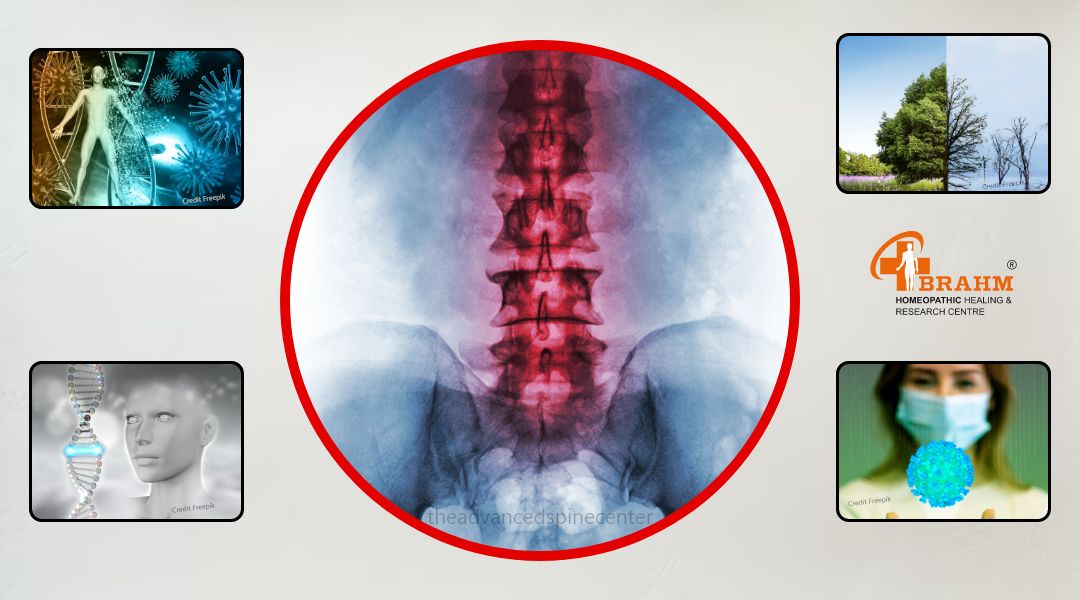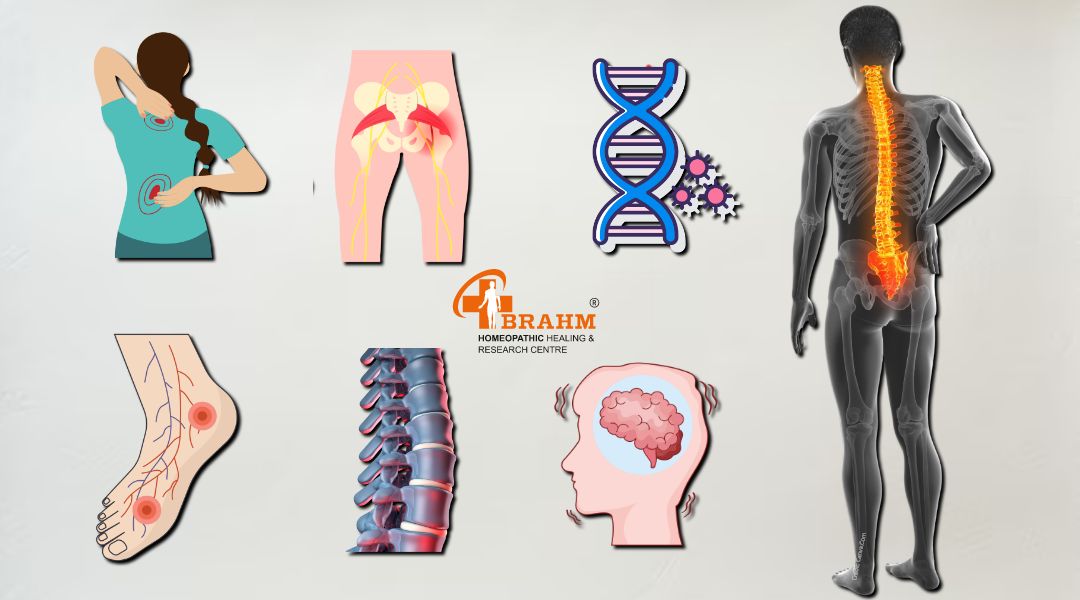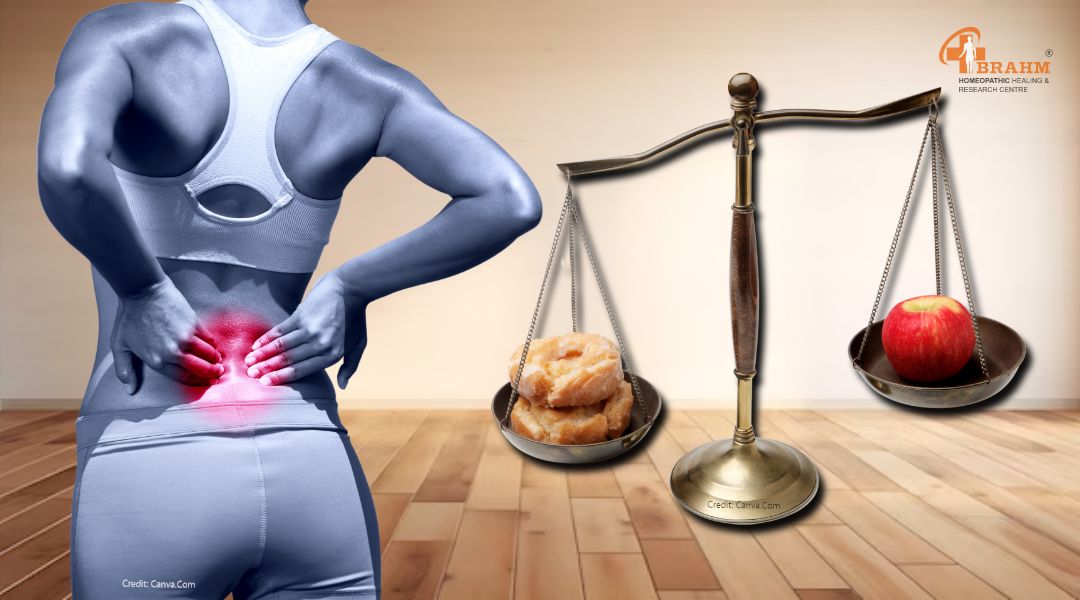
What is Ankylosing spondylitis | Causes of Ankylosing spondylitis and its treatment
What is Ankylosing spondylitis (AS)?
Ankylosing spondylitis (AS) is an inflammatory arthritis primarily affecting the spine, causing inflammation, pain, stiffness, and eventual vertebrae fusion. It is a chronic and progressive condition that can affect other joints, organs, and tissues. Key features include spinal involvement, back pain and stiffness, enthesitis, peripheral joint involvement, and extra-articular manifestations. The disease typically begins in early adulthood, usually before the age of 40, and progresses slowly. The disease has a strong genetic component, with a significant association with the human leukocyte antigen (HLA)-B27 gene.
Causes of Ankylosing spondylitis (AS)?

Ankylosing Spondylitis (AS) Causes and Risk Factors
Genetic Factors:
• Strong genetic component, with association with HLA-B27 gene, a protein marker involved in immune system's inflammatory response regulation.
• Around 90-95% of AS individuals carry the HLA-B27 gene.
Immunological Factors:
• Characterized by abnormal immune system activation and inflammation, particularly targeting spine and pelvis joints.
• Presence of HLA-B27 gene may trigger an abnormal immune response, leading to chronic inflammation and tissue damage.
Environmental Factors:
• Potential environmental triggers include infections, gut dysbiosis, smoking, and certain environmental exposures.
Microbial Factors:
• Alterations in the composition and diversity of gut bacteria may contribute to AS development and pathogenesis.
Autoimmune Component:
• AS shares some features with autoimmune disorders, including immune-mediated inflammation and tissue damage.
• Abnormal immune response against self-antigens, possibly triggered by genetic and environmental factors, plays a role in AS pathogenesis.
Features of Ankylosing spondylitis (AS)?
Ankylosing spondylitis: Key Features and Clinical Manifestations

• Back Pain and Stiffness: Persistent low back pain and stiffness, worsening with rest or inactivity.
• Sacroiliitis: Inflammation of the sacroiliac joints, causing pain, tenderness, and stiffness in the lower back, buttocks, and hips.
• Spinal Involvement: Inflammation of the axial skeleton, particularly the vertebrae of the lower back and upper back.
• Enthesitis: Inflammation at the sites where tendons and ligaments attach to bone, commonly affecting the ligaments and tendons around the spine, pelvis, and chest.
• Peripheral Joint Involvement: Pain, swelling, and limited range of motion in other joints, resembling other types of arthritis.
• Extra-articular Manifestations: Can affect various organs and systems outside the joints, leading to extra-articular manifestations.
• Systemic Symptoms: Some individuals may experience systemic symptoms such as fatigue, fever, loss of appetite, and unintentional weight loss.
• Onset and Progression: Typically begins in early adulthood, usually before the age of 40, with symptoms worsening over time.
• Genetic Factors: Strong genetic component, with a significant association with the human leukocyte antigen (HLA)-B27 gene.
Diagnosis of Ankylosing spondylitis (AS)?

Diagnosing Ankylosing spondylitis (AS)
• Medical History: Involves a detailed medical history, including symptoms suggestive of AS.
• Physical Examination: Comprehensive physical examination to assess for signs and symptoms of AS.
• Imaging Studies: Uses X-rays for evaluating radiographic changes associated with AS.
• Magnetic Resonance Imaging (MRI) for early signs of inflammation.
• Laboratory Tests: HLA-B27 Testing and Inflammatory Markers for assessment.
• Assessment of Clinical Criteria: Based on modified New York criteria for AS classification.
• Differential Diagnosis: Differential diagnosis may be necessary to distinguish AS from other conditions.
• Specialized Evaluation: Referral to a rheumatologist or other specialists may be necessary for cases of diagnostic uncertainty or complex presentations.
Treatment for Ankylosing spondylitis (AS):
Medicine for Ankylosing spondylitis (AS):
Homeopathy and Disease Cure

• Homeopathy is curable, regardless of the duration of illness.
• Early treatment is faster for chronic conditions and later stages.
• Intelligent individuals start treatment as soon as they observe any symptoms.
Brahm Homeopathic Healing & Research Centre Treatment Plan
• Brahm's research-based, scientific treatment module is effective in curing diseases.
• A team of qualified doctors systematically observes and analyzes cases.
• They record signs, symptoms, disease progression, prognosis, and complications.
• They provide detailed disease information, diet charts, exercise plans, and lifestyle plans.
• They guide individuals on improving general health conditions through systematic management of homeopathic medicines.
Types of Ankylosing spondylitis (AS)?
Ankylosing Spondylitis (AS) and Subtypes
• AS is a subtype of spondyloarthritis, a group of inflammatory rheumatic diseases affecting the spine and sacroiliac joints.
• Subtypes include:
- Radiographic Axial Spondyloarthritis (r-axSpA): Characterized by radiographic evidence of sacroiliitis but may not meet AS criteria. Symptoms include inflammatory back pain and stiffness.
- Non-Radiographic Axial Spondyloarthritis (nr-axSpA): Similar to r-axSpA but lacks sacroiliitis on X-rays. Symptoms include inflammatory back pain, sacroiliac joint tenderness, and elevated inflammatory markers.
- Peripheral Spondyloarthritis: Involves inflammation of peripheral joints, but may also exhibit features of axial involvement.
- Juvenile Ankylosing Spondylitis: Can occur in children and adolescents, involving both axial and peripheral joints.
• Early recognition and management of these subtypes are crucial for optimizing outcomes and improving quality of life.
Adverse effects of Ankylosing Spondylitis (AS)?
Ankylosing Spontylitis: Potential Adverse Effects and Management
• Chronic Pain: Persistent back pain and stiffness, especially in the lower back and sacroiliac joints, can significantly impact mobility and quality of life.
• Reduced Mobility: Progressive inflammation and structural changes in the spine and sacroiliac joints can lead to reduced spinal flexibility and mobility, resulting in ankylosis.
• Impaired Posture: Changes in posture, including forward stooping or kyphosis, can lead to discomfort, difficulty breathing, and physical function limitations.
• Functional Limitations: Chronic pain, reduced mobility, and impaired posture can result in functional limitations, impacting independence, productivity, and overall well-being.
• Fatigue: Chronic inflammation, pain, disrupted sleep patterns, and medication side effects can lead to persistent and debilitating fatigue.
• Psychological Impact: Chronic pain, functional limitations, and uncertainty about the future can lead to increased stress, anxiety, depression, and decreased self-esteem.
• Sleep Disturbances: Pain, stiffness, and discomfort can disrupt sleep patterns, leading to difficulties in falling asleep or achieving restorative sleep.
• Work and Social Impacts: AS can affect work productivity, career choices, and social interactions.
• Complications: In severe cases, AS may lead to spinal fractures, osteoporosis, cardiovascular disease, respiratory dysfunction, and inflammatory involvement of other organs and systems.
• Reduced Quality of Life: The adverse effects can lead to decreased physical function, impaired emotional well-being, social isolation, and diminished overall satisfaction with life.
Diet in Ankylosing Spondylitis (AS)?
Ankylosing Spontylitis Dietary Considerations

• Anti-Inflammatory Foods: Consume foods rich in omega-3 fatty acids, antioxidant-rich fruits and vegetables, and healthy fats.
• Balanced Macronutrients: Choose whole, unprocessed foods and limit refined carbohydrates, sugars, and unhealthy fats.
• Protein-Rich Foods: Include lean protein sources like poultry, fish, lean meats, eggs, legumes, tofu, and dairy products.
• Calcium and Vitamin D: Ensure adequate intake of calcium and vitamin D to support bone health. Sources include dairy products, leafy green vegetables, fortified foods, and vitamin D from sunlight exposure and dietary sources.
• Hydration: Stay hydrated throughout the day for joint health, digestion, and overall well-being.
• Fiber-Rich Foods: Include whole grains, fruits, vegetables, legumes, and nuts for digestive health and regular bowel movements.
• Limit Trigger Foods: Identify trigger foods like processed foods, refined sugars, saturated fats, and foods high in gluten or dairy.
• Moderate Alcohol Consumption: Drink alcohol in moderation to prevent inflammation and disrupt sleep patterns.
• Individualized Approach: Consult with a healthcare provider or registered dietitian for personalized dietary advice.
• Dietary recommendations should be part of a comprehensive treatment plan that includes medication, physical activity, stress management, and regular medical monitoring.
Convectional Treatment & Treatment guide of Ankylosing Spondylitis (AS):
Ankylosing spondylitis (AS) is a condition that requires a multidisciplinary approach to management. It involves a combination of biologic agents, physical therapy, lifestyle modifications, and regular monitoring. Biologic agents, such as TNF inhibitors, are used for moderate to severe AS patients who do not respond well to NSAIDs or DMARDs. Physical therapy and exercise programs can improve flexibility, strength, posture, and mobility. Lifestyle modifications include regular exercise, posture management, quitting smoking, pain management techniques, and surgery, such as spinal fusion surgery, for severe cases. Regular medical monitoring and patient education are also essential to optimize outcomes and support overall health.


















